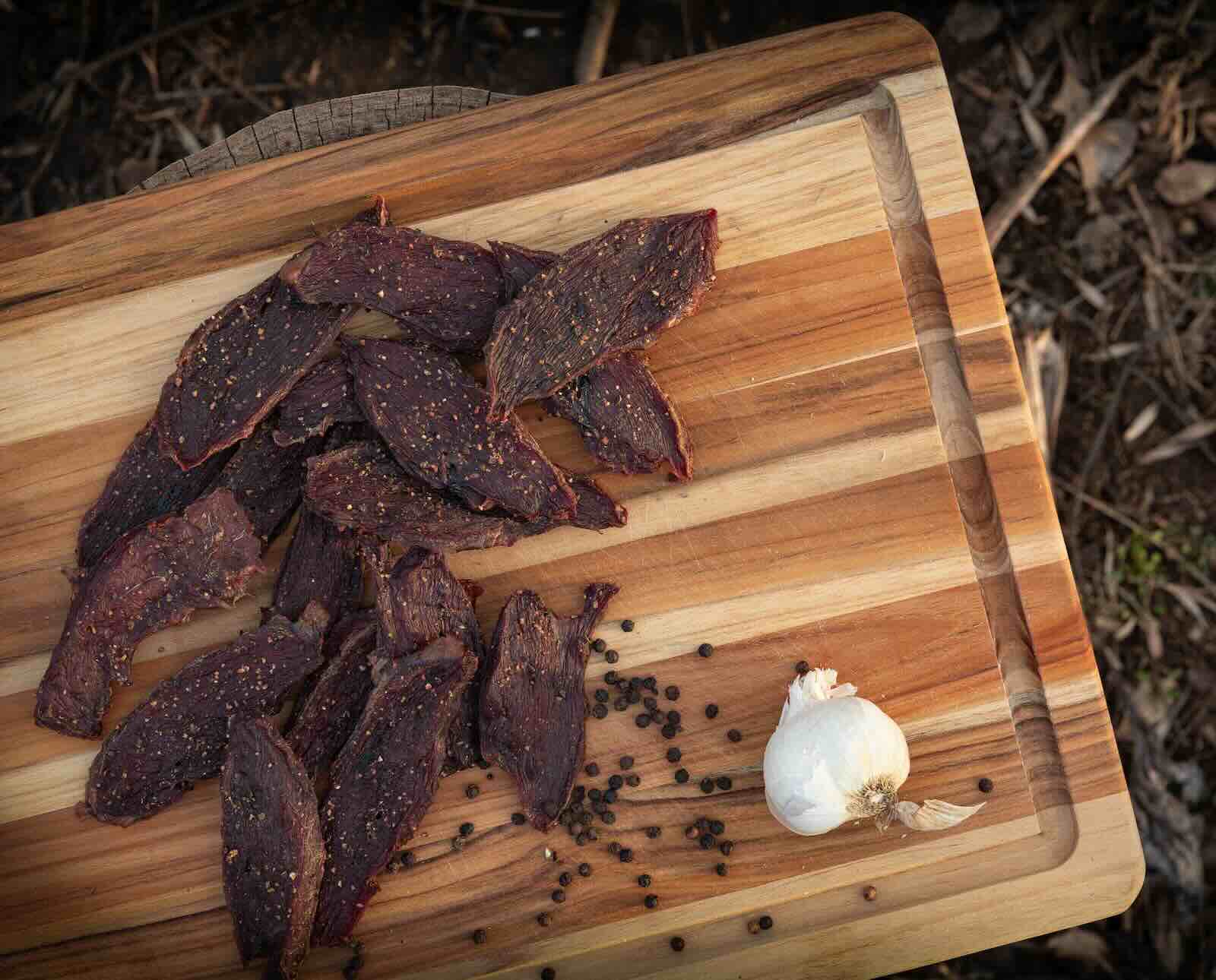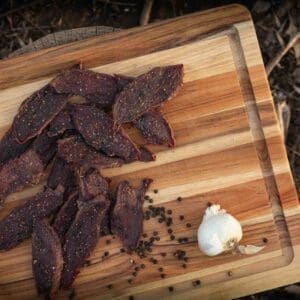
Jack Hennessy grew up in the South Suburbs of Chicago…
Processing and preserving goose meat as jerky is a great way to make protein-rich snacks for future hunts
Jerky is the go-to option for any wild meat that hunters deem unworthy as table fare. Geese, especially light geese, tend to fall into this category. Even if you deeply appreciate goose meat’s culinary potential, we all still love jerky and need to scratch that itch from time to time.
The Light Goose Conservation Order is underway, which allows for additional goose hunting opportunities in some states. This helps to manage overpopulations of light goose species because they can wreak havoc in their nesting grounds when their numbers are too large. As part of this program, hunters in many states can legally hunt in ways that are otherwise prohibited during the regular waterfowl hunting season, such as by removing the plugs in their shotguns, using electronic calls, and–in some locations–with increased or even unlimited bag limits (be sure to check your local regulations before hitting the field in the spring, though). For those successful hunting parties, the post-hunt field dressing can be fast and furious, where many skinless breasts get piled into game bags.
You can adjust this recipe accordingly if you’re sitting on just one or two goose breasts or have a whole garbage bag or two full of them. You may need a bigger dehydrator if you have a lot of goose meat.
Over the years, I’ve reduced the amount of curing salt that I use. I try to use just enough to help preserve the meat and provide that cured flavor without making everything taste like pepperoni. You can skip the InstaCure if you’d like, but you’ll miss out on that cured flavor and slightly longer shelf life.
Skinless goose breast is fattier than venison. This fat content affects shelf life. Fat runs a higher risk of oxidizing, which leads to spoilage. Generally speaking, when I make waterfowl jerky, I let it cool then seal it and keep it in the fridge for upwards of two weeks. With very lean venison jerky, I seal it and keep it in the back of the cupboard for two months. If you ever need to preserve it longer, vacuum seal and freeze your jerky. In my experience, frozen jerky will remain good indefinitely, though food scientists say it’s best for two to three years.
Lastly, always remember to chew wild waterfowl jerky slowly. The jerky may still contain steel shot.

Wild Goose Jerky
Equipment
Ingredients
- 1 goose breast
- Black pepper freshly cracked
Brine
- ½ gallon water
- ½ tbsp InstaCure #1
- ¼ cup soy sauce or tamari sauce
- ½ head garlic smashed
- ¼ tsp sesame oil
- 2 tbsp brown sugar
- 1 tsp ginger powdered
- 1 tbsp Kosher salt
Instructions
- While the goose breast is still partially frozen, use a fillet knife to trim the breasts of any fat or fascia. Using either a slicer or a deft hand, slice the goose breast horizontally (against the grain, from the wing side to the other wing if the breast was still on the bird) into 1/4-inch thick slices.
- To make the brine, add all the ingredients to a medium saucepan or pot and simmer, stirring often, until the salt and sugar dissolve. Allow the brine to cool before adding the sliced goose.
- Brine goose slices overnight or for 10 to 12 hours.
- Dust the goose slices with freshly cracked black pepper.
- To dehydrate, take the goose slices directly from the brine and place them on a dehydrator rack with ample space between each piece. Sometimes, it helps to spray racks with cooking oil, which helps keep the jerky from sticking to the rack.
- If you’re using a dehydrator, dehydrate the goose meat for either one hour at 160F, two hours at 140F, or three hours at 130F.
- If you’re using a smoker, pellet grill, or oven, shoot for 160F for four hours.
- If you like your jerky more brittle, you could cook it for another hour or two at 130F. If you like it a bit juicier, try one hour at 160F and then four hours at 130F.
Nutrition
Jack Hennessy grew up in the South Suburbs of Chicago and didn't start hunting until he attended graduate school in Spokane, Washington, at the age of 26. Hennessy began work in professional kitchens in high school but didn't start writing wild game recipes until he joined the Spokesman-Review in 2014. Since then, his recipes have appeared with Petersen's Hunting, Backcountry Journal, Gun Dog Magazine, among many others. He now lives with his Wirehaired Vizsla, Dudley, in Wichita, Kansas.



